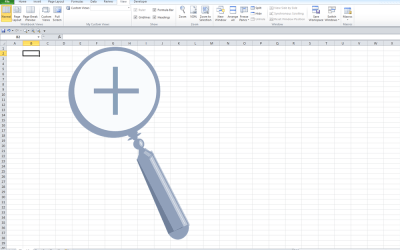Microsoft Excel: New Features and Functions in Excel 365
Microsoft Excel Training Series | Level 3
Course Details
Duration: 1 day (9 am – 4 pm)
Microsoft® Excel® Versions: 365 (Windows)
Delivery Methods (Instructor-led): In-person (Live classroom) | Online in virtual classroom
Course Dates: August 29, 2024 (Online in virtual classroom or In-person) | View schedule ![]()
Course Fee: $295 CAD per person + HST (Virtual classroom), $325 CAD per person + HST (Bring your own device for in-person courses) or $345 CAD per person + HST (Avantix Learning provides device for in-person courses)*
Timing: Public scheduled courses run from 9:00 am to 4:00 pm (Eastern Time).
Virtual classroom courses: Our instructor-led virtual classroom courses are delivered in a virtual classroom environment. Students will be sent a virtual classroom invitation prior to the course.
In-person classroom courses: Our instructor-led, live classroom (in-person) courses are held in downtown Toronto at 18 King Street East, Suite 1400, Toronto, Ontario, Canada. Some courses are also held at an alternate downtown Toronto location.
Custom training: This course may be delivered at your site or ours as an instructor-led virtual classroom or in-person solution. Contact us at info@avantixlearning.ca for more information including savings for custom group training.
Some public courses and / or formats and may be subject to a minimum enrollment requirement.
Course Overview
This course is designed for Excel users who have upgraded to Excel 365 or who have been using 365 but would like to learn some of the best new features and functions available in this version. Students will learn to use new functions such as TEXTSPLIT, TEXTAFTER, TEXTBEFORE, IFS, SWITCH, LET, LAMBDA, MAXIFS, MINIFS, XLOOKUP and XMATCH. Workbooks will be created with dynamic arrays and then transformed using dynamic array functions including SORT, SORTBY, UNIQUE and FILTER. Students will learn new ways to work with stock and geographic data using Rich Data Types. During this hands-on course, students will practice their skills and have the opportunity to ask questions and interact with the instructor. Each student will also receive a full course manual with tips, tricks and shortcuts as well as sample and exercise files.
Note: Some features and functions may also be available in Excel 2019 or 2021 but are included as they are newer functions.
Prerequisite: Microsoft Excel: Intermediate / Advanced or equivalent knowledge and skills.
Location and timing: Public scheduled courses are held online in virtual classroom format or in downtown Toronto and run from 9:00 am to 4:00 pm (Eastern Time).
Related training: View all Microsoft Excel courses >
INCLUDED IN THIS COURSE
- Comprehensive course manual
- Keyboard shortcuts quick reference
- Sample and exercise files (new samples added frequently)
- Refreshments (for classes conducted in Avantix Learning classrooms)
- Certificate of completion
- Follow-up email support
Course Topics
Extracting Text
- Extracting text using the TEXTBEFORE, TEXTAFTER and TEXTSPLIT functions
Using Functions that Return Conditional Results
- Calculating minimum or maximum values using multiple criteria with MINIFS or MAXIFS
- Using the IFS or SWITCH function vs the IF function
- Looking up values using XLOOKUP
- Looking up matching values using XMATCH
Using Dynamic Arrays and Functions
- Understanding dynamic arrays
- Extracting data into spill ranges
- Comparing legacy arrays vs dynamic arrays
- Using the FILTER and UNIQUE functions with dynamic arrays
- Using the SORT and SORTBY functions with dynamic arrays
- Using the SEQUENCE function
- Calculating totals for dynamic arrays
- Sharing files containing dynamic arrays with users with older Excel versions
Creating Variables
- Creating variables in formulas using the LET function
Using the LAMBDA Function
- Using new Excel functions with the LAMBDA function
- Creating a custom function
- Using the LAMBDA function to generate data in rows or columns
Importing Data from a Picture or PDF
- Importing data from a picture and converting it to editable Excel data
- Converting a PDF into an editable Excel document
Using Rich Data Types
- Inserting live stock data
- Inserting linked geographic data
Administrative Tools
- Navigating quickly between worksheets, charts and other objects
- Inserting an image into a cell
*Prices subject to change.
Our instructor-led courses are delivered in virtual classroom format or at our downtown Toronto location at 18 King Street East, Suite 1400, Toronto, Ontario, Canada (some in-person classroom courses may also be delivered at an alternate downtown Toronto location). Contact us at info@avantixlearning.ca if you'd like to arrange custom instructor-led virtual classroom or onsite training on a date that's convenient for you.
Copyright 2024 Avantix® Learning

Custom training (Onsite or Online in Virtual Classroom)
Register now for a public course or contact us at info@avantixlearning.ca for more information about any of our courses or to discuss custom training options (virtual classroom or in-person in live classroom).
FIND THE BEST EXCEL COURSE FOR YOUR NEEDS >
Related courses
Microsoft Excel: Data Analysis
Microsoft Excel: Introduction to Visual Basic for Applications (VBA) Macros
Microsoft Excel: Accessible Excel Documents
Microsoft Excel: Introduction to Power Query to Get and Transform Data
Microsoft Excel: Introduction to Power Pivot
Microsoft Project: Introduction
You may like
What is Power Query in Excel?
Power Query in Excel is a powerful data transformation tool that allows you to import data from many different sources and then extract, clean, and transform the data. You will then be able to load the data into Excel or Power BI and perform further data analysis. With Power Query (also known as Get & Transform), you can set up a query once and then refresh it when new data is added. Power Query can import and clean millions of rows of data.
How to Stop or Control Green Error Checking Markers in Excel
In Microsoft Excel, errors are flagged with small green marker or triangle in the upper left corner of the cell. However, these indicators display when there may be an error but is, in fact, not an error.
Excel Shortcuts to Zoom In and Out in Your Worksheets (4 Shortcuts)
There are several mouse and keyboard shortcuts you can use to zoom in and out in Excel worksheets. Some of these shortcuts are built-in and others can be created by customizing Excel Options.
How to Use Flash Fill in Excel (4 Ways with Shortcuts)
You can use Flash Fill in Excel to extract, combine, clean or format data quickly without using formulas. In order to use Flash Fill, Excel must be able to understand a pattern in a column to the left of the column where you want to fill the data so the source data should be entered in a consistent way. You can use Flash Fill by clicking a button, using shortcuts or by using the Fill handle. You run Flash Fill by entering an example of the data you want to fill using a "by example" logic.
You may also like
How to Insert or Type E with an Accent Mark in PowerPoint (È, É, Ê, Ë, è, é, ê, or ë)
You can insert or type e with an accent mark in PowerPoint using built-in tools or keyboard shortcuts (including Alt code shortcuts). The letter e can be inserted with an accent in both upper or lower case in text boxes or placeholders on slides, the slide master or layouts. The following are common accents in upper or lower case – È, É, Ê, Ë, è, é, ê, or ë.
How to Fade a Picture or Part of a Picture in PowerPoint (Using a Gradient)
You can fade a picture in PowerPoint by drawing a rectangle shape on top of the picture and then filling the rectangle with a gradient from opaque to transparent. This technique is often used to fade an image into the background of a slide. Since the rectangle is placed on top of the image and then text may be placed on top of the rectangle, you may need to reorder the objects.
How to Lock an Image, Shape or Other Object in PowerPoint
You can now lock an image, shape or other object in PowerPoint. Objects can be locked in Normal View or Slide Master View. Only PowerPoint 365 users can lock objects to prevent moving and resizing. This is helpful if you want to select and move other objects on the slide or prevent others from moving or resizing an object. You can lock items using the context menu or the Selection Pane.
Microsoft, the Microsoft logo, Microsoft Office and related Microsoft applications and logos are registered trademarks of Microsoft Corporation in Canada, US and other countries. All other trademarks are the property of the registered owners.
Avantix Learning |18 King Street East, Suite 1400, Toronto, Ontario, Canada M5C 1C4 | Contact us at info@avantixlearning.ca







